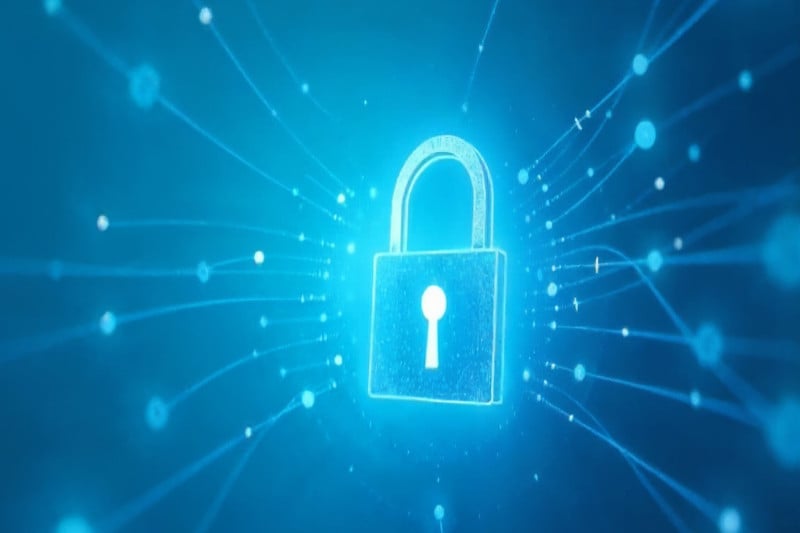How Blockchain Enhances SIEM for Comprehensive Threat Detection
- Introduction to Blockchain SIEM
- What is SIEM?
- Understanding Blockchain Technology
- Why Blockchain is Essential for Modern SIEM Solutions
- The Future of SIEM and Blockchain Integration
- How Blockchain Technology Works in a SIEM Environment
- Key Features of Blockchain in SIEM: Immutability, Decentralization, and Consensus
- The Architecture of Blockchain SIEM Solutions
- 1. Data Ingestion and Pre-Processing
- 2. Blockchain Layer for Event Storage
- 3. Consensus Mechanism for Event Validation
- 4. Real-Time Alerts and Advanced Correlation
- 5. Immutable Audit Trail for Compliance and Forensics
- Future Considerations: Scalability and Interoperability
- Use Cases for Blockchain SIEM
- Securing Financial Institutions with Blockchain SIEM
- Using Blockchain SIEM for Government and Public Sector Protection
- Applications in Healthcare and Supply Chain Security
- Challenges and Limitations of Blockchain SIEM
- Scalability Issues in Blockchain Networks
- Integration Challenges with Legacy Systems
- Cost Considerations for Implementing Blockchain in SIEM
- Blockchain SIEM vs Traditional SIEM: A Comparative Analysis
- Differences in Data Security
- Auditing and Transparency
- Scalability: A Double-Edged Sword
- The Potential for Blockchain to Replace or Enhance Traditional SIEM
- Blockchain SIEM and Compliance
- Meeting GDPR, HIPAA, and Other Regulatory Standards with Blockchain SIEM
- The Role of Blockchain SIEM in Maintaining Audit Trails and Logs
- The Future of SIEM and Blockchain Technology
- AI and Machine Learning in Blockchain SIEM
- Predictive Threat Detection with Blockchain and SIEM
- Innovations and Trends to Watch in Blockchain Security Systems
- SearchInform’s Role in Blockchain SIEM
- Monitoring Blockchain Transactions for Security Insights
- Analyzing Blockchain Data for Compliance and Forensics
- Leveraging Blockchain Analytics for Business Intelligence
Introduction to Blockchain SIEM
In today's digital landscape, security threats are evolving rapidly, and organizations need cutting-edge solutions to stay ahead. Blockchain-driven SIEM systems offer a revolutionary approach to handling cybersecurity threats. By combining the decentralized power of blockchain technology with the advanced monitoring capabilities of SIEM, businesses can fortify their defense mechanisms like never before.
What is SIEM?
SIEM, or Security Information and Event Management, is a comprehensive cybersecurity tool that collects and analyzes real-time data from a variety of sources, such as firewalls, servers, and applications, to identify and respond to potential threats. It’s the digital equivalent of having an intelligent security system monitoring every corner of an organization’s network. SIEM solutions play a pivotal role in detecting anomalies, identifying vulnerabilities, and alerting teams to suspicious activity.
Understanding Blockchain Technology
Blockchain is a decentralized digital ledger that records transactions across multiple systems, ensuring that the information is secure, transparent, and immutable. It removes the need for a central authority by using a distributed network where each transaction is verified by consensus. Blockchain technology has gained widespread recognition for its security advantages, primarily because the decentralized nature of blockchain makes it extremely difficult for hackers to alter or corrupt the data.
Why Blockchain is Essential for Modern SIEM Solutions
The combination of blockchain and SIEM technology represents a game-changer for cybersecurity. By integrating blockchain, blockchain-based SIEM enhances transparency, security, and trust. Here's why blockchain is becoming indispensable for SIEM solutions:
- Immutable Logs: Blockchain provides an immutable, tamper-proof record of security events. This means that once data is recorded, it cannot be altered, ensuring that SIEM event logs remain trustworthy.
- Decentralized Data Storage: In a traditional SIEM, data is often stored centrally, making it vulnerable to attacks. Blockchain-driven SIEM eliminates this vulnerability by distributing data across a decentralized network.
- Enhanced Collaboration: By using a blockchain, multiple entities can securely share threat intelligence without worrying about data being tampered with. This fosters better collaboration between organizations and across industries.
- Improved Incident Response: With the ability to verify and track incidents across decentralized systems, blockchain SIEM allows security teams to act faster and with greater precision, reducing the potential damage from a security breach.
- Greater Data Integrity: The cryptographic principles behind blockchain ensure that the data in a SIEM system remains accurate and unaltered. SIEM and blockchain integration means that even if a hacker attempts to modify the data, the change will be immediately detected.
The Future of SIEM and Blockchain Integration
As cybersecurity threats become more sophisticated, the fusion of SIEM and blockchain technology will continue to grow in importance. Blockchain's ability to provide unparalleled security, transparency, and trust makes it a critical asset for SIEM solutions in the modern world. The future of cybersecurity lies in blockchain-driven SIEM systems that can keep pace with emerging threats while providing organizations with the tools they need to protect their data and operations.
How Blockchain Technology Works in a SIEM Environment
The integration of blockchain into SIEM (Security Information and Event Management) environments isn't just a trend—it's a fundamental shift in how cybersecurity systems handle data, detect threats, and ensure integrity. Blockchain-driven SIEM offers a more secure and resilient architecture by using decentralized networks, cryptographic validation, and consensus mechanisms that prevent data tampering, offering an elevated layer of trust and transparency. Let’s dive deeper into the technicalities of how this transformative technology operates within a SIEM environment.
Key Features of Blockchain in SIEM: Immutability, Decentralization, and Consensus
Blockchain technology revolutionizes traditional SIEM operations by introducing several critical features that address common security and performance challenges.
- Immutability Through Cryptographic Hashing: In a blockchain-based SIEM, immutability is achieved through cryptographic hashing. Each block of data is hashed using algorithms like SHA-256, creating a unique digital fingerprint. If any data within a block is altered, the hash changes, breaking the chain’s integrity. When applied to SIEM logs, this ensures that security events—whether they are login attempts, malware alerts, or firewall breaches—cannot be retroactively altered. This feature guarantees the integrity of log data, providing a reliable foundation for forensic investigations.
- Decentralization via Distributed Ledgers: One of the most critical flaws in traditional SIEM systems is the centralized database, which can become a bottleneck or single point of failure. By leveraging a decentralized structure, blockchain SIEM distributes data across a network of nodes, each holding a copy of the ledger. This distribution prevents cybercriminals from targeting one system to manipulate logs or erase evidence. It also adds redundancy, meaning the system remains operational even if individual nodes are compromised.
- Consensus Mechanisms: Proof of Work vs. Proof of Stake: For any event to be logged in a blockchain-driven SIEM, it must be validated by a consensus mechanism. Depending on the architecture, this could involve mechanisms like Proof of Work (PoW) or Proof of Stake (PoS). In PoW, nodes compete to solve complex cryptographic puzzles to validate transactions and add them to the chain, offering strong security but potentially slower performance. In PoS, validators are chosen based on the number of tokens they hold, providing a faster and more energy-efficient process, ideal for high-transaction environments like real-time security event management.
The Architecture of Blockchain SIEM Solutions
Blockchain SIEM solutions feature a unique architecture that blends the strengths of both blockchain and SIEM technology. This hybrid structure transforms how security events are captured, stored, and analyzed, ensuring robustness against tampering, advanced threat detection, and resilient incident response.
1. Data Ingestion and Pre-Processing
In a blockchain SIEM environment, data ingestion from multiple security sources is the first critical step. These sources can include:
- Firewalls
- Intrusion Detection Systems (IDS)
- Endpoint Detection and Response (EDR) tools
- Network traffic logs
- Application logs
- User activity monitoring
Each security event is first pre-processed and encrypted using advanced encryption algorithms like AES-256 before being submitted to the blockchain. This prevents sensitive information from being exposed even if a node or the ledger itself is compromised.
2. Blockchain Layer for Event Storage
Once encrypted, events are written to a distributed ledger. Each entry on the blockchain represents a block that contains:
- Transaction Data: In this context, a "transaction" is a security event, such as a failed login attempt, a malicious script being executed, or a file being uploaded. The data in this block includes the event type, time stamp, IP addresses involved, and other relevant metadata.
- Cryptographic Hash: Each block contains a hash of the previous block, linking the blocks in chronological order. This chain of hashes creates the immutable ledger that is tamper-proof.
- Merkle Trees for Data Integrity: Many blockchain SIEM architectures incorporate Merkle trees for improved efficiency in verifying and checking data integrity. A Merkle tree organizes event logs into a hierarchy of hashes, allowing for quick detection of data tampering.

3. Consensus Mechanism for Event Validation
Before an event is written to the blockchain, it undergoes validation through the consensus mechanism. Depending on the architecture:
- Proof of Work (PoW): Some SIEM systems employ PoW, where nodes (miners) compete to solve a computationally difficult puzzle to validate the event. While highly secure, this mechanism can slow down real-time detection and response in high-volume environments.
- Proof of Stake (PoS): Alternatively, PoS is more efficient for SIEM purposes. Here, validators (chosen nodes) verify events based on their stake in the network, providing a faster way to achieve consensus without compromising security. This makes blockchain SIEM solutions faster and more scalable.
4. Real-Time Alerts and Advanced Correlation
After validation, the event is added to the blockchain. This triggers an immediate alert through the SIEM interface, enabling real-time responses to security incidents. Blockchain SIEM solutions go beyond simple logging by using advanced correlation engines that cross-reference events across the entire network, identifying patterns that may indicate advanced persistent threats (APTs), insider threats, or other sophisticated attack vectors.
- Behavioral Analysis: Many blockchain-based SIEM solutions incorporate machine learning algorithms to analyze user behavior and detect anomalies that indicate suspicious activities. This integration further enhances the accuracy of threat detection.
- Automated Incident Response: When certain thresholds are met—such as a series of failed login attempts followed by a successful privilege escalation—the SIEM system can automatically trigger a response, such as revoking user access, blocking IP addresses, or isolating compromised endpoints.
5. Immutable Audit Trail for Compliance and Forensics
The blockchain ledger serves as a permanent, immutable audit trail. This is crucial for organizations that must comply with stringent regulations like GDPR, HIPAA, or PCI-DSS, which require meticulous record-keeping of security events. By integrating blockchain SIEM, companies can guarantee that all events are recorded in a tamper-proof environment, simplifying the auditing process.
In forensic investigations, this immutable record ensures that security teams can trace the entire lifecycle of an event without fear of tampered evidence. This is especially important when presenting evidence in legal proceedings or for internal investigations following a breach.
Future Considerations: Scalability and Interoperability
As the volume of security data grows, the scalability of blockchain SIEM solutions is a critical concern. Future architectures may adopt sharding techniques, which split the blockchain into smaller segments to handle larger datasets more efficiently. Additionally, interoperability with other blockchain platforms and traditional SIEM systems will be vital for organizations that want to integrate blockchain and SIEM technologies across hybrid environments.
The synergy between blockchain SIEM and traditional cybersecurity frameworks represents a quantum leap in data protection, transparency, and threat detection. By leveraging the decentralized and immutable nature of blockchain, blockchain-driven SIEM systems provide enhanced security, making them the future of advanced threat management in the evolving digital landscape. With features like real-time validation, distributed event logging, and tamper-proof audit trails, SIEM and blockchain integration is not just an upgrade—it's a necessity for modern cybersecurity strategies.
Use Cases for Blockchain SIEM
Blockchain technology, with its decentralized and tamper-proof nature, has found a powerful ally in SIEM systems. By integrating blockchain into SIEM environments, industries with stringent security requirements can enhance data protection, threat detection, and compliance efforts. From financial institutions to healthcare, blockchain SIEM offers targeted solutions for a variety of sectors, making it a versatile and reliable tool in cybersecurity.
Securing Financial Institutions with Blockchain SIEM
Financial institutions are prime targets for cyberattacks due to the sensitive nature of their data and the high volume of transactions. Blockchain-driven SIEM provides an enhanced level of security that can prevent fraud, insider threats, and large-scale breaches.
In traditional SIEM solutions, transaction logs and user activities are stored in centralized databases, which are vulnerable to hacking and tampering. However, with blockchain-based SIEM, these logs are stored on a decentralized ledger, making it nearly impossible for attackers to manipulate financial records. The immutability of blockchain ensures that all transaction histories remain secure and verifiable, reducing the risk of financial fraud.
Additionally, SIEM and blockchain integration enables real-time detection of suspicious activity. Whether it’s an unusual spike in withdrawal attempts or unauthorized access to customer accounts, the blockchain SIEM system can quickly alert the security team and automatically trigger incident response protocols. This advanced monitoring capability ensures that financial institutions can stay one step ahead of cybercriminals.
Using Blockchain SIEM for Government and Public Sector Protection
The government and public sector manage highly sensitive information, including personal data, national security files, and confidential communications. Blockchain-based SIEM solutions can offer these sectors the security and transparency needed to protect such critical information.
In these environments, data integrity is crucial. Blockchain SIEM solutions ensure that every event, from access to classified information to changes in critical infrastructure systems, is logged on a decentralized ledger. This makes it impossible for unauthorized parties to alter records without being detected. The decentralized nature of blockchain and SIEM technology also ensures that sensitive data is distributed across a secure network, making it more resilient to attacks that target central repositories.
Moreover, blockchain SIEM can be instrumental in managing supply chains and logistics within the government sector, ensuring the security of assets and preventing any unauthorized alterations to supply chain records. The transparency of blockchain enables real-time audits, giving government agencies a higher level of accountability and compliance with regulations.
Applications in Healthcare and Supply Chain Security
The healthcare industry is another area where blockchain-driven SIEM can play a transformative role. Hospitals, clinics, and healthcare providers deal with massive amounts of personal and sensitive patient data. Blockchain SIEM solutions can help these organizations protect patient information from data breaches and insider threats. By using SIEM and blockchain integration, patient records are stored on a tamper-proof blockchain, where access is strictly monitored, logged, and authenticated.
Additionally, the healthcare supply chain benefits from blockchain-based SIEM by ensuring the integrity and authenticity of medical supplies, pharmaceuticals, and equipment. As products move through the supply chain, each step is recorded on the blockchain, making it easy to trace the origins of medical goods and verify their safety. This feature is particularly valuable in preventing counterfeit drugs from entering the healthcare system and ensuring compliance with regulatory standards.
Beyond healthcare, blockchain SIEM has powerful applications in broader supply chain security. The ability to track products, verify authenticity, and monitor transactions in real-time makes blockchain and SIEM technology a robust tool for industries that rely heavily on complex global supply chains, such as manufacturing, retail, and logistics.
With its ability to secure sensitive data, ensure compliance, and prevent fraud, blockchain SIEM solutions are rapidly becoming a cornerstone of cybersecurity across multiple sectors.
Challenges and Limitations of Blockchain SIEM
While blockchain SIEM offers numerous advantages in terms of security and data integrity, like any technology, it comes with its own set of challenges and limitations. Organizations need to be aware of these obstacles when considering the adoption of blockchain-driven SIEM solutions. From scalability concerns to integration difficulties, understanding these challenges is essential for successful implementation.
Scalability Issues in Blockchain Networks
As much as blockchain technology provides a robust framework for security, one of the primary challenges is scalability. Traditional blockchain networks, such as Bitcoin or Ethereum, process a limited number of transactions per second compared to centralized systems. When applied to a blockchain SIEM environment, which handles vast amounts of real-time security event data, this limitation can become a significant bottleneck.
SIEM systems need to process millions of logs daily, especially in large enterprises with extensive IT infrastructure. The addition of blockchain technology to the system may slow down the process of logging and analyzing events due to the time it takes for consensus mechanisms (like Proof of Work or Proof of Stake) to verify each transaction. As blockchain-based SIEM solutions scale, the delay in processing these logs can lead to slower threat detection and response times, reducing the overall efficiency of the system.
Efforts are being made to address this issue through scaling solutions and blockchain sharding. These approaches aim to split the workload across different parts of the network to allow faster processing, but such innovations are still developing, and not all SIEM and blockchain technology implementations are equipped to handle massive datasets efficiently.
Integration Challenges with Legacy Systems
Implementing a blockchain-driven SIEM solution in an organization that relies on legacy systems presents a significant challenge. Most traditional systems were not built with blockchain in mind, and the process of integrating blockchain SIEM into such infrastructures can be both time-consuming and complex.
Legacy systems often operate on outdated architectures that do not support modern security tools, let alone decentralized blockchain systems. SIEM and blockchain integration requires reconfiguring or upgrading existing IT infrastructures, which can be costly and disruptive to ongoing operations. Additionally, data formats and protocols used in legacy systems may not be compatible with blockchain SIEM solutions, resulting in difficulties during the data migration process.
Beyond technical compatibility, organizations face the challenge of training staff to manage and operate these hybrid systems. Blockchain is still relatively new, and its unique characteristics, such as decentralized control and consensus mechanisms, require specialized knowledge that may not be present in teams accustomed to legacy technology.
Cost Considerations for Implementing Blockchain in SIEM
Another significant limitation of blockchain-based SIEM is the cost of implementation. While blockchain SIEM solutions offer long-term benefits like enhanced security and transparency, the upfront costs associated with integrating blockchain into an organization’s SIEM can be high. The expenses include not only the costs of new infrastructure but also the development and customization required to tailor the SIEM and blockchain technology to specific organizational needs.
Additionally, blockchain networks, especially those using energy-intensive consensus mechanisms like Proof of Work, can have high operational costs. As blockchain-driven SIEM systems need to process numerous security events in real-time, the computational power required to run the network can be significant. This can lead to increased energy consumption, which translates into higher operational expenses over time.
Moreover, ongoing maintenance, monitoring, and upgrades to the blockchain SIEM infrastructure add to the long-term costs. Many companies also need to factor in the cost of hiring or training specialized personnel to manage these complex systems, further increasing the overall investment required.
While blockchain and SIEM integration presents a compelling future for cybersecurity, the challenges of scalability, integration with legacy systems, and high implementation costs must be carefully weighed. Organizations must evaluate their readiness and resources before fully committing to adopting blockchain SIEM solutions.
Blockchain SIEM vs Traditional SIEM: A Comparative Analysis
As cybersecurity threats evolve, organizations are faced with the challenge of choosing the most effective tools for monitoring and securing their environments. Blockchain SIEM has emerged as a modern alternative to traditional SIEM systems, offering unique advantages in terms of data security, auditing, and scalability. But how does blockchain-based SIEM truly compare to its conventional counterpart? Let’s break down the key differences and explore whether blockchain-driven SIEM is set to replace or complement traditional systems.
Differences in Data Security
One of the most critical differences between blockchain SIEM and traditional SIEM lies in how they handle data security. Traditional SIEM systems store logs, security events, and user activities in centralized databases, making them vulnerable to breaches, insider attacks, and data manipulation. While these systems can detect and respond to threats in real-time, the centralization of data can become a single point of failure if compromised.
In contrast, blockchain-based SIEM distributes event logs across a decentralized ledger. Each security event is recorded on the blockchain with cryptographic hashing, ensuring the data cannot be altered or deleted after it is entered. This immutability makes blockchain SIEM far more resilient to tampering, providing an extra layer of security that traditional SIEM lacks. The decentralized nature of SIEM and blockchain technology also means that if one node is compromised, the rest of the system remains intact, offering superior protection against insider threats and unauthorized changes.
Auditing and Transparency
Auditability is another area where blockchain SIEM outshines traditional systems. Traditional SIEM solutions can track and log events but often require manual oversight and involve complex queries to extract audit trails. This process can be time-consuming and may leave room for human error or oversight, making it challenging to guarantee the integrity of audit logs.
On the other hand, blockchain-driven SIEM automatically provides a fully transparent, immutable audit trail. Every action or event, from a failed login attempt to a change in user privileges, is recorded and cryptographically secured on the blockchain. This makes audits easier, faster, and far more reliable. Regulatory compliance also becomes simpler with blockchain and SIEM integration, as the blockchain offers a permanent and tamper-proof record of all activities, ensuring organizations can quickly provide verifiable evidence during audits.
Scalability: A Double-Edged Sword
While blockchain SIEM brings many advantages, scalability remains a complex issue. Traditional SIEM systems are often designed to handle high volumes of data efficiently, offering seamless real-time monitoring for large organizations with significant amounts of network traffic. They can easily scale to meet the demands of enterprises with global operations.
In comparison, blockchain-based SIEM faces inherent scalability challenges due to the decentralized nature of blockchain networks. Each event log must be validated by consensus mechanisms like Proof of Work or Proof of Stake, which can slow down the system, especially as the number of nodes and security events grows. The trade-off between security and speed becomes more apparent in large-scale environments where millions of logs need to be processed daily. However, advancements in blockchain scalability solutions, such as layer-2 networks or sharding, offer promise in addressing these limitations, potentially closing the gap between traditional SIEM and blockchain-driven SIEM in terms of performance.
from different sources:
The Potential for Blockchain to Replace or Enhance Traditional SIEM
The debate over whether blockchain SIEM will eventually replace traditional SIEM systems is ongoing. While SIEM and blockchain integration brings undeniable benefits in terms of data security, immutability, and auditing, the scalability challenges and costs associated with blockchain technology make it less likely to fully replace traditional SIEM—at least in the near term.
However, blockchain-driven SIEM has immense potential to enhance traditional SIEM systems. By layering blockchain on top of existing SIEM solutions, organizations can enjoy the best of both worlds: the real-time, scalable monitoring of traditional SIEM, combined with the tamper-proof data integrity and transparency of blockchain. This hybrid approach can significantly strengthen an organization’s cybersecurity posture, particularly in industries with strict regulatory requirements and high data sensitivity, such as finance, healthcare, and government sectors.
While blockchain-based SIEM might not yet be ready to replace traditional systems entirely, its integration into existing SIEM infrastructures is a powerful evolution in the fight against cyber threats. The future of cybersecurity may well lie in this seamless blend of decentralized blockchain technology and the tried-and-true reliability of traditional SIEM systems.
Blockchain SIEM and Compliance
As regulations around data privacy and security become more stringent, organizations face increased pressure to ensure that they meet standards such as GDPR, HIPAA, and others. Blockchain-driven SIEM offers a revolutionary approach to compliance, making it easier for businesses to align with regulatory requirements. By utilizing SIEM and blockchain technology, companies can not only enhance data protection but also streamline the process of maintaining audit trails, ensuring that they remain in full compliance with modern regulations.
Meeting GDPR, HIPAA, and Other Regulatory Standards with Blockchain SIEM
The General Data Protection Regulation (GDPR) and the Health Insurance Portability and Accountability Act (HIPAA) are two of the most critical regulatory frameworks that govern data privacy today. Both laws impose strict guidelines on how organizations should collect, store, and protect sensitive data. Failure to comply with these regulations can lead to severe financial penalties and reputational damage. Blockchain-based SIEM offers a unique solution to these compliance challenges.
GDPR, for instance, emphasizes data integrity and the ability to prove that personal data is stored securely and is not tampered with. The immutable nature of blockchain SIEM ensures that once data is recorded, it cannot be altered or deleted, providing an auditable record that aligns perfectly with GDPR requirements. Additionally, the transparency of blockchain and SIEM integration allows organizations to easily demonstrate compliance during audits by showing a permanent log of security events related to personal data.
Similarly, HIPAA requires healthcare providers and organizations to implement security measures to protect patient data. Blockchain-driven SIEM can help healthcare institutions maintain strict control over access to sensitive health records by ensuring that every access attempt is logged on the blockchain. The decentralized nature of blockchain SIEM further adds resilience by protecting these logs from insider threats or tampering, which are crucial concerns for HIPAA compliance.
The Role of Blockchain SIEM in Maintaining Audit Trails and Logs
Maintaining a clear and tamper-proof audit trail is a fundamental aspect of meeting compliance requirements across various industries. Traditional SIEM systems are capable of logging security events, but these logs can sometimes be vulnerable to tampering or accidental deletion. This can make compliance with regulations more difficult, as organizations must prove the integrity of their audit logs to regulatory bodies.
Blockchain-based SIEM solves this problem by creating a secure, decentralized ledger of all security events. Every login attempt, file access, or configuration change is recorded on the blockchain, where it is encrypted and linked to the previous record. This chain of events cannot be altered or deleted, ensuring that blockchain SIEM provides a reliable, tamper-proof audit trail that meets the strictest compliance standards. Whether an organization needs to comply with financial regulations, healthcare laws, or data protection standards, the transparency and immutability of SIEM and blockchain technology make it easier to maintain regulatory compliance.
For example, in financial institutions, which are subject to regulations such as SOX (Sarbanes-Oxley Act), maintaining accurate records of financial transactions and internal controls is paramount. Blockchain SIEM provides an immutable record of all events related to financial transactions, helping companies demonstrate compliance with SOX and other financial regulations. The integration of blockchain and SIEM ensures that logs are easily accessible, verifiable, and secure.
Additionally, many regulations require organizations to conduct regular audits to ensure compliance. The immutable nature of blockchain-driven SIEM provides auditors with direct access to a secure and unalterable record of all security events, making the audit process smoother and more reliable. Organizations can provide clear, indisputable evidence of compliance, reducing the risk of fines or penalties due to incomplete or tampered audit trails.
Blockchain SIEM solutions represent a powerful tool for organizations striving to meet the demands of modern compliance frameworks. By providing tamper-proof, transparent audit trails and logs, blockchain and SIEM integration streamlines the compliance process while enhancing data security and trust.
The Future of SIEM and Blockchain Technology
As cyber threats become more sophisticated, organizations must leverage cutting-edge technologies to protect their assets. Blockchain-driven SIEM is evolving rapidly, with innovations like AI, machine learning, and predictive threat detection transforming how security is managed. The integration of SIEM and blockchain technology has already shown promise, but the future holds even more exciting possibilities that will revolutionize cybersecurity.
AI and Machine Learning in Blockchain SIEM
Artificial Intelligence (AI) and machine learning (ML) are transforming nearly every industry, and blockchain-based SIEM is no exception. By combining the decentralized security features of blockchain with the analytical power of AI, organizations can gain unprecedented insights into their security posture.
AI enhances blockchain SIEM by automating the analysis of vast amounts of security data. With machine learning algorithms, SIEM systems can detect patterns and anomalies in real-time, learning from previous events to improve threat detection. This self-learning capability allows blockchain-driven SIEM to evolve with emerging threats, ensuring that organizations are always equipped to handle the latest cyberattacks.
Furthermore, AI-driven SIEM can prioritize threats, enabling faster responses to critical incidents. For example, if a particular pattern of network traffic correlates with a known malware attack, SIEM and blockchain integration can automatically flag the event for immediate action. The use of AI and ML ensures that security teams spend less time sifting through false positives and more time responding to genuine threats.
Predictive Threat Detection with Blockchain and SIEM
One of the most exciting advancements in blockchain SIEM is predictive threat detection. Traditional SIEM systems focus on identifying and responding to events as they happen, but with blockchain-driven SIEM, predictive analytics powered by AI can anticipate threats before they occur. This shift from reactive to proactive security is a game-changer for cybersecurity teams.
Predictive threat detection relies on AI models trained on large datasets of past security incidents. By analyzing these historical trends, SIEM and blockchain technology can identify indicators of potential threats long before they become critical. For instance, subtle changes in user behavior or system performance might be early warning signs of an insider threat or a ransomware attack.
When integrated with blockchain technology, predictive models gain an added layer of reliability. The decentralized and immutable nature of blockchain ensures that data used for prediction cannot be tampered with, providing a more trustworthy foundation for predictive analytics. With blockchain and SIEM integration, security teams can take preemptive action—whether it’s patching vulnerabilities, adjusting access controls, or isolating suspicious users—before a breach occurs.
Innovations and Trends to Watch in Blockchain Security Systems
The future of blockchain SIEM solutions is brimming with innovation. As blockchain technology continues to mature, several key trends are emerging that will shape the next generation of security systems.
- Quantum-Resistant Blockchains: As quantum computing becomes more advanced, it poses a potential threat to the cryptographic algorithms that underpin traditional blockchain systems. Quantum-resistant blockchains, which use advanced cryptography designed to withstand quantum attacks, are a growing area of interest for blockchain-based SIEM. These systems will ensure that SIEM and blockchain technology remain secure even in the age of quantum computing.
- Interoperability Between Blockchain Networks: As organizations adopt more blockchain solutions, the need for interoperability between different blockchain networks will grow. Blockchain-driven SIEM solutions that can seamlessly integrate with multiple blockchain platforms will allow for more cohesive and comprehensive security monitoring across various decentralized systems.
- Decentralized AI Models: With the rise of decentralized AI, organizations are exploring ways to train machine learning models on blockchain networks. By leveraging SIEM and blockchain integration, decentralized AI models can be trained in a secure, transparent manner, offering improved privacy and security over traditional centralized AI systems. This innovation will make blockchain SIEM even more effective at analyzing security data without compromising sensitive information.
- Blockchain-Powered Identity Management: Identity management is a critical aspect of any cybersecurity strategy, and blockchain is poised to revolutionize how identities are managed. Blockchain-based SIEM solutions can integrate decentralized identity management systems, providing a secure and verifiable way to manage user identities across multiple systems. This will significantly reduce the risk of identity theft, credential compromise, and insider threats.
As these innovations continue to unfold, blockchain and SIEM integration will drive the future of cybersecurity. The combination of AI, predictive analytics, and quantum-resistant technologies will ensure that blockchain SIEM remains at the forefront of securing the digital landscape, keeping organizations safe in an increasingly complex threat environment.
SearchInform’s Role in Blockchain SIEM
SearchInform empowers organizations to monitor and assess blockchain-based activities, ensuring transparency, security, and compliance across blockchain networks. As blockchain usage continues to expand in various sectors, SearchInform’s ability to analyze this data is a key asset for organizations looking to protect their digital assets.
Monitoring Blockchain Transactions for Security Insights
One of the critical strengths of SearchInform lies in its ability to analyze blockchain data to detect anomalies or unusual patterns in transactions. With SIEM capabilities, SearchInform can track blockchain transactions in real-time, identifying potential security threats such as fraudulent activities, insider threats, or unauthorized access attempts.
Although blockchain is inherently secure, it’s not immune to vulnerabilities like wallet compromises or smart contract exploits. SearchInform’s SIEM solutions can analyze these transactions, flagging unusual behavior and helping security teams investigate incidents more efficiently. This level of monitoring enables businesses to respond proactively to potential threats in blockchain ecosystems, ensuring that their decentralized operations remain secure.
Analyzing Blockchain Data for Compliance and Forensics
SearchInform’s ability to analyze blockchain data is crucial for regulatory compliance. With blockchain being used in industries like finance and healthcare, there is a growing need to ensure that blockchain transactions adhere to standards such as GDPR, HIPAA, or financial regulations.
SearchInform’s SIEM system can monitor and report on blockchain data to ensure that it complies with these regulatory frameworks. Moreover, in the event of an incident, SearchInform’s tools provide comprehensive forensic capabilities, allowing organizations to trace the history of blockchain transactions and ensure that they meet compliance requirements.
Leveraging Blockchain Analytics for Business Intelligence
Beyond security, blockchain data holds valuable insights for business intelligence. SearchInform’s analytical capabilities extend to understanding patterns, trends, and behaviors within blockchain networks, providing organizations with the intelligence they need to make informed decisions. This includes identifying bottlenecks in transaction processing, evaluating the efficiency of smart contracts, or assessing the performance of blockchain-enabled services.
By analyzing blockchain data through its powerful SIEM tools, SearchInform enables businesses to not only secure their operations but also optimize them for better performance and transparency.
Our solutions provide tools needed to analyze blockchain data effectively, ensuring that organizations can maintain security, compliance, and operational efficiency in their blockchain networks. As the adoption of blockchain continues to grow, SearchInform’s capabilities in blockchain data analysis will be invaluable to businesses looking to harness the power of decentralized systems while safeguarding their assets.
Leverage SearchInform’s powerful SIEM solutions to gain critical insights into blockchain data and protect your organization from emerging threats. Stay ahead in the rapidly evolving world of cybersecurity by ensuring your blockchain operations are secure, compliant, and optimized.
Full-featured software with no restrictions
on users or functionality
Company news
SearchInform uses four types of cookies as described below. You can decide which categories of cookies you wish to accept to improve your experience on our website. To learn more about the cookies we use on our site, please read our Cookie Policy.
Necessary Cookies
Always active. These cookies are essential to our website working effectively.
Cookies does not collect personal information. You can disable the cookie files
record
on the Internet Settings tab in your browser.
Functional Cookies
These cookies allow SearchInform to provide enhanced functionality and personalization, such as remembering the language you choose to interact with the website.
Performance Cookies
These cookies enable SearchInform to understand what information is the most valuable to you, so we can improve our services and website.
Third-party Cookies
These cookies are created by other resources to allow our website to embed content from other websites, for example, images, ads, and text.
Please enable Functional Cookies
You have disabled the Functional Cookies.
To complete the form and get in touch with us, you need to enable Functional Cookies.
Otherwise the form cannot be sent to us.

Subscribe to our newsletter and receive a bright and useful tutorial Explaining Information Security in 4 steps!

Subscribe to our newsletter and receive case studies in comics!







